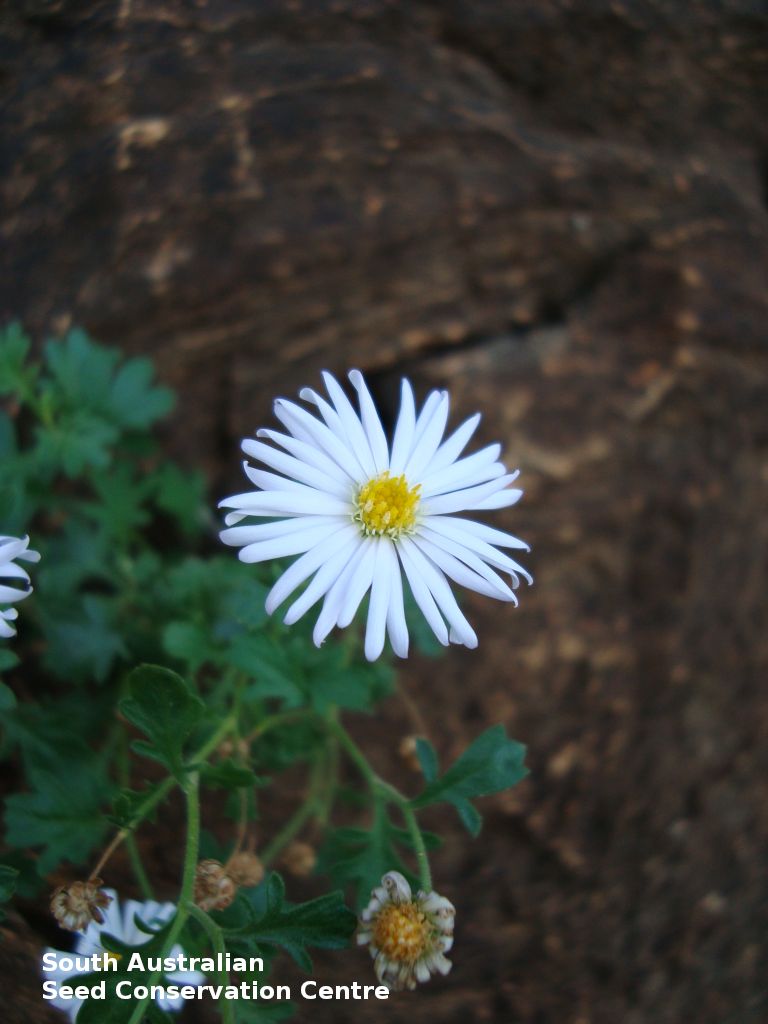






Botanical art
Prior names
Brachycome lyrifolia
Brachycome ciliaris var. lyrifolia
Common names
Lyrate Variable Daisy
Lyrate-leaf Daisy
Etymology
Brachyscome from the Greek 'brachys' meaning short and 'kome' meaning hair; referring to the tufts of short bristles or hairs of the pappus. Ciliaris from the Latin 'cilium' meaning eye-lash; referring to the fruit having the margins fringed with hairs. Lyrifolia meaning lyre-shaped leaves.
Distribution and status
Endemic to South Australia and found in the Flinders and Gammon Ranges, growing in shrub and woodland communities, often in rock crevices. Native. Common in South Australia.
Herbarium regions: Lake Eyre, Flinders Ranges, Eastern, Eyre Peninsula
NRM regions: Eyre Peninsula, South Australian Arid Lands
AVH map: SA distribution map (external link)
Plant description
A perennial herb with ascending or decumbent stems with leaves, stems, peduncles and involucres covered in fine glandular hairs. Leaves lyrate to obovate with 2-8 irregular teeth, narrowed into a petiole-like base. Ray florets mauve and yellow disc florets. This variety differ from the other four varieties found in South Australia, by having pinnatisect leaves that are lyrate to obovate and irregularly toothed and non woolly stems. Flowering between May and October. Fruits are brown daisy-heads. Seeds are brown semi-flat ovoid seed to 1.5 mm long, with serrated margin and covered with scattered hairs. Seed embryo type is spatulate fully developed.
Seed collection and propagation
Collect seeds between January and November. Pick heads that are maturing, drying off, with brown seeds that dislodge easily. Place the seed-heads in a tray and leave to dry for a week. Then gently rub the heads by hand to dislodge the seeds. Use a sieve to separate the unwanted material. Store the seeds with a desiccant such as dried silica beads or dry rice, in an air tight container in a cool and dry place. From two collections, the seed viability wase low to high, ranging from 45% to 90%.
| Location | No. of seeds (weight grams) | Number of plants | Date collected | Collection number Collection location | Date stored | % Viability | Storage temperature |
|---|---|---|---|---|---|---|---|
| BGA | 750 (0.082 g) | 5-Dec-2005 | PJA108 Flinders Ranges | 1-Aug-2007 | 45% | -18°C | |
| BGA | 4,700 (0.49 g) | 50+ | 16-Jun-2010 | TST932 Flinders Ranges | 1-Jan-2012 | 90% | -18°C |
| BGA | 3,000 (0.29 g) | 15 | 15-Nov-2007 | RJB75601 Northern Lofty | 30-Jun-2018 | 65% | -18°C |
Number of plants: This is the number of plants from which the seeds were collected.
Collection location: The Herbarium of South Australia's region name.
% Viability: Percentage of filled healthy seeds determined by a cut test or x-ray.